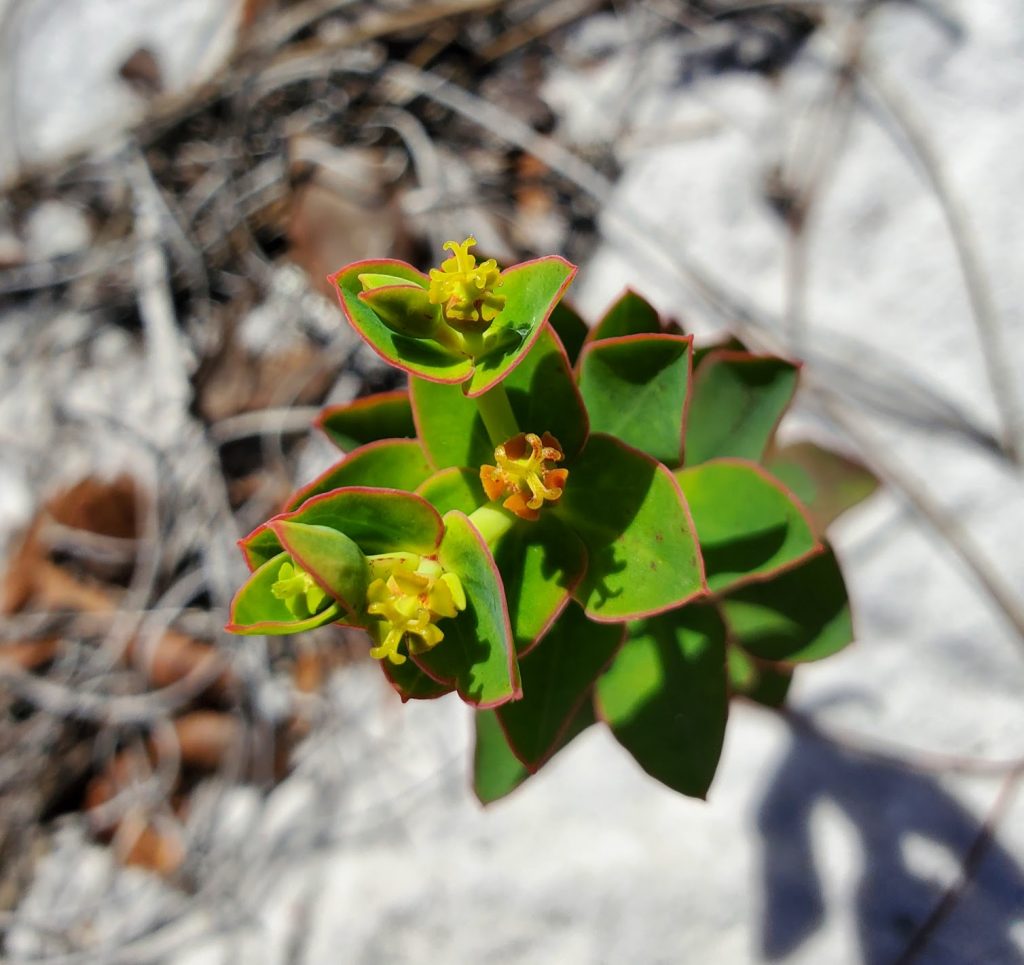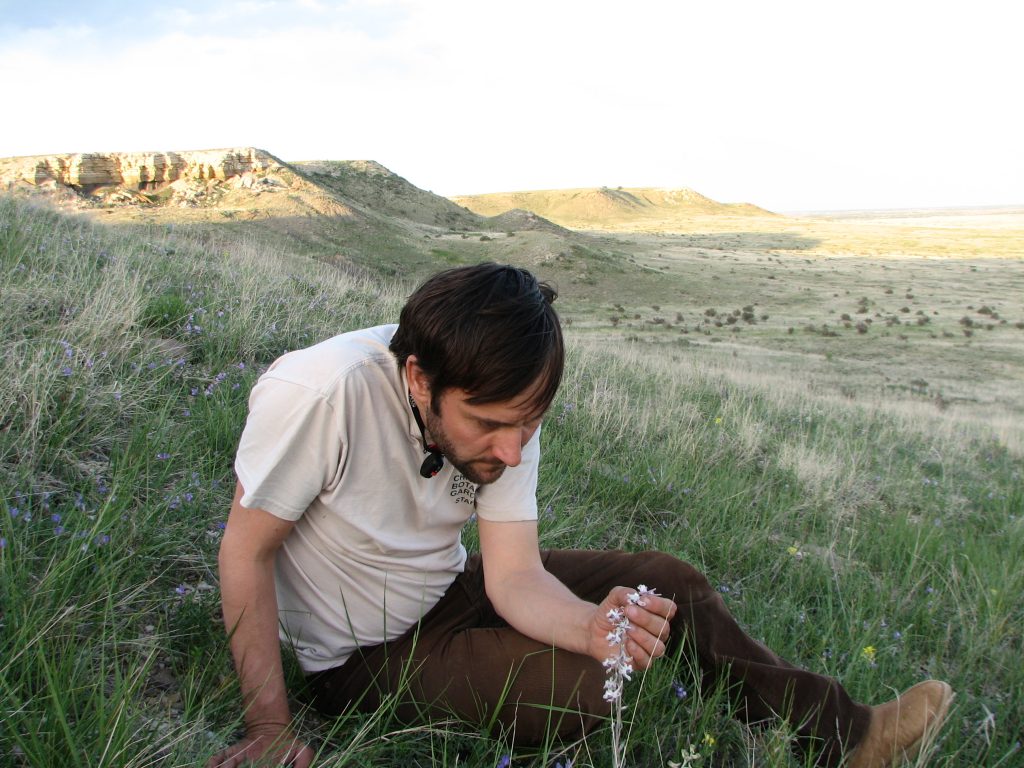
SePPCon 2024: Conservation Genetics An Overview of the Conservation Genetics Program at the Atlanta Botanical Garden Lauren Eserman-Campbell*, Amanda Carmichael, Danielle Contreras, Atlanta Botanical Garden The Center’s Conservation Genetics Team works to inform many areas of conservation, including the genetic structure of in situ populations, genetic representation in ex situ collections, phylogenetics, species delimitation, […]
Read More…
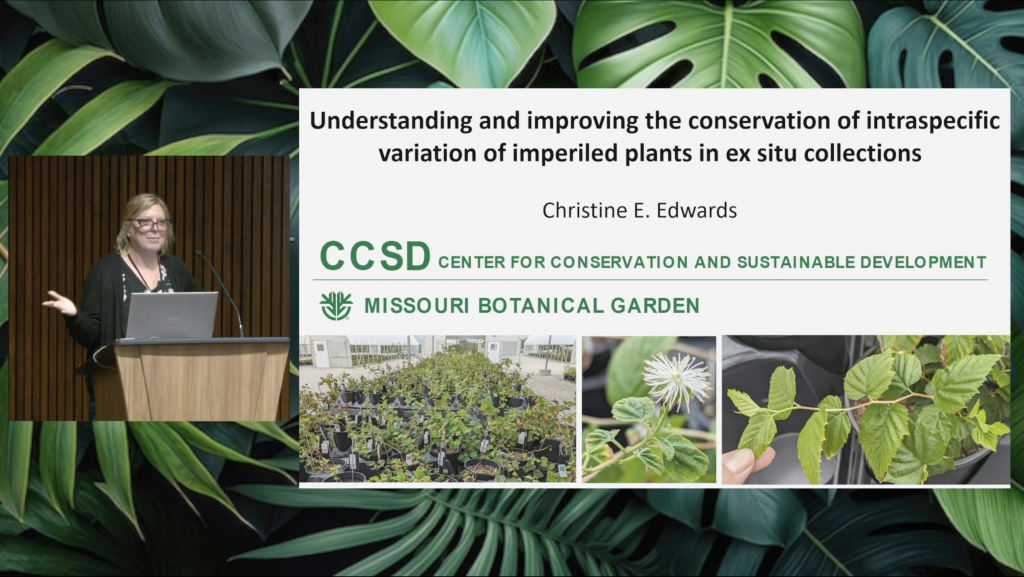
The representation of intraspecific variation of a plant species in ex situ collections is a major issue that has often been addressed by employing general collection guidelines, based on principles of population genetics, meant to be applicable to a wide range of plant species in the absence of genetic information. Recent studies show, however, that […]
Read More…
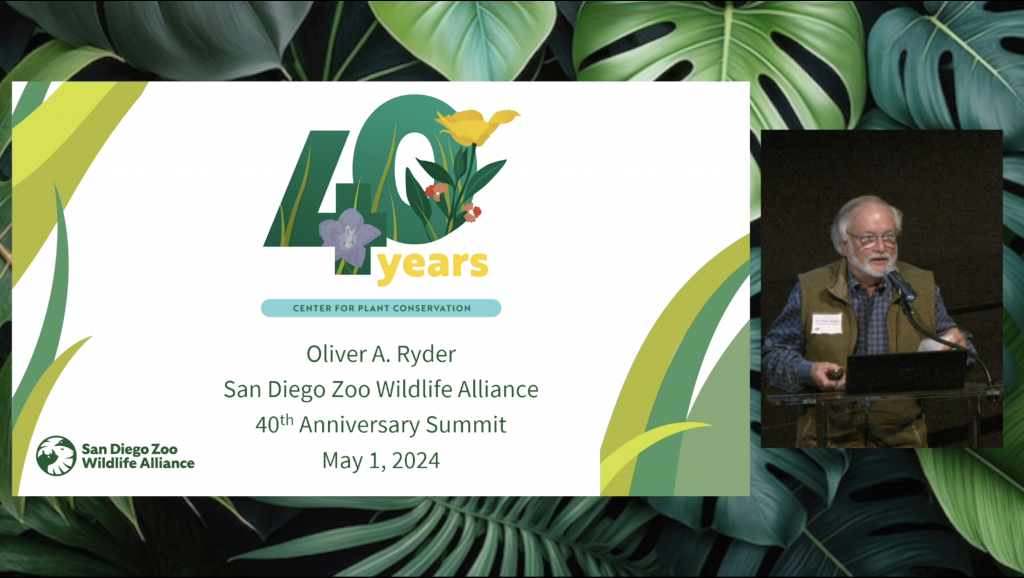
Dr. Oliver Ryder is the Kleberg Endowed Director of Conservation Genetics at San Diego Zoo Wildlife Alliance. His current work focuses on biobanking, molecular genetics, genomics, and genetic rescue efforts, including stem cell applications, all focused on reducing extinction risk and contributing to species recovery and sustainable populations. He guides strategic efforts to foster and […]
Read More…
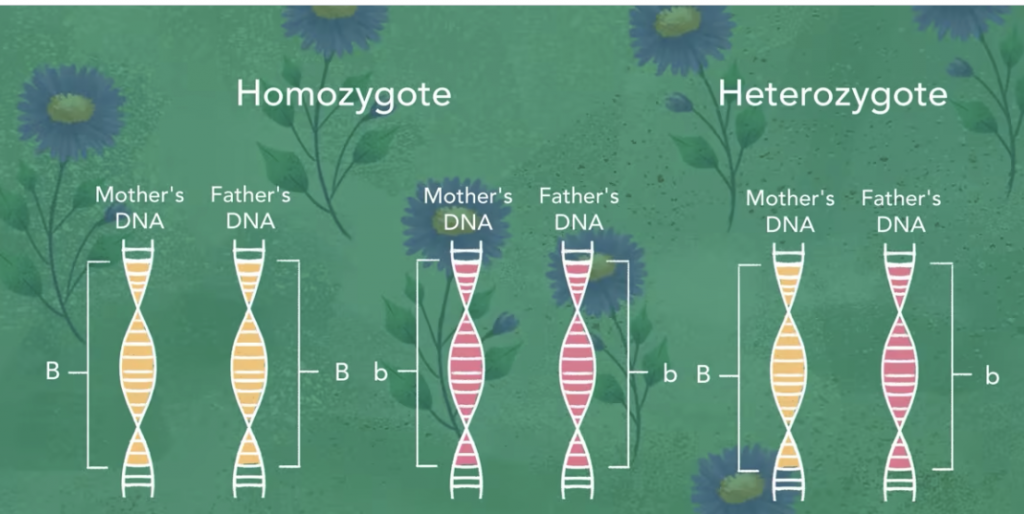
Storyboard contributed by: Dr. Christy Edwards and Brock Mashburn, Missouri Botanical Garden Genetics insights can be critical for managing rare plant populations, but not all professionals with rare plants in their care have a background in genetics, which can make interpreting genetic studies difficult. The goal of this video is to give an introduction of […]
Read More…
Storyboard Contributed by: Dr. Christy Edwards and Brock Mashburn, Missouri Botanical Garden Genetic diversity is what produces the physical and functional variation in a rare plant species. Rare plants species rely on genetic diversity to survive or adapt to disease, climate change, and other emerging threats. This video explains the importance of quantifying patterns of […]
Read More…
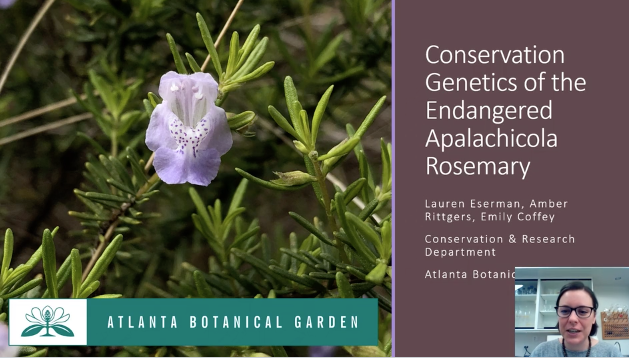
Lauren Eserman, Atlanta Botanical Garden Conradina glabra, or Apalachicola rosemary, is a federally listed endangered species that exists only on a small area of sandhill in Liberty County, Florida. Forestry practices in the last 100 years have resulted in declining populations of C. glabra. In the wild, plants produce very few seeds, but small plants that resemble seedlings […]
Read More…
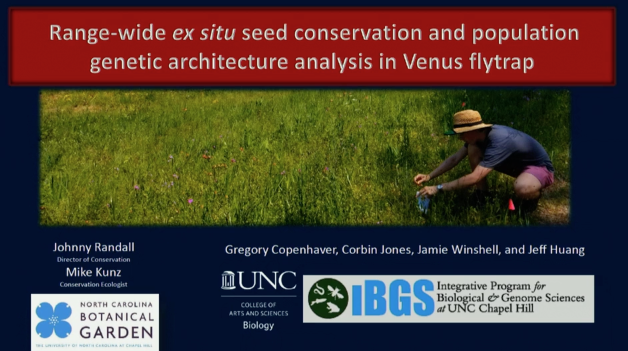
Dr. Johnny Randall, North Carolina Botanical Garden The infamous Venus flytrap, Dionaea muscipula, found across North Carolina and into South Carolina, has been seen to be declining in recent years. It is currently under review for federal listing, is ranked G2 on NatureServe, and considered vulnerable by RedList. Threats to this charismatic plant include poaching, […]
Read More…
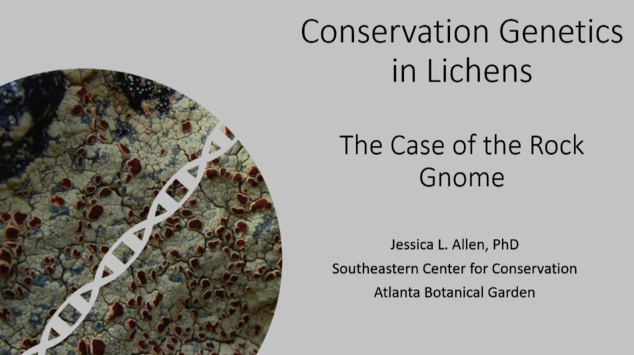
Jessica L. Allen, PhD, Southeastern Center for Conservation, Atlanta Botanical Garden Dr. Allen outlines a conservation genomics approach to assessing genetic diversity between geographically separated populations of the Rock Gnome lichen, a Southern Appalachian endemic. Her results show that each locale sampled has a genetically distinct population. This suggests that the management plan for this lichen should include protecting […]
Read More…

Dr. Rebecca Hale, University of North Carolina, Asheville Wayne Morgan, UNC Asheville Biology Elise Powell, UNC Asheville Biology Leila Beikmohamadi, Western Carolina University, Psychology Mara Alexander, US Bureau of Land Management Caroline Kennedy, UNC Asheville Biology Jennifer Rhode Ward, UNC Asheville Biology Pitchers of the purple pitcher plant, Sarracenia purpurea, are distinctly shorter and broader […]
Read More…
Dr. Sean Hoban, The Morton Arboretum, Taylor Callicrate, Species Conservation Toolkit Initiative, Chicago Zoological Society, Susan Deans, Plant Biology and Conservation Program, Northwestern University, Michael Dosmann, The Arnold Arboretum of Harvard University, Jeremie Fant, Chicago Botanic Garden, Oliver Gailing, University of Göttingen, Kayri Havens, Chicago Botanic Garden, Andrew Hipp, The Morton Arboretum, Priyanka Kadav, Michigan […]
Read More…
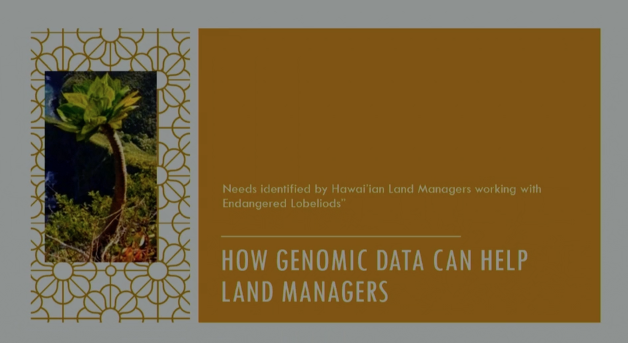
Dr. Jeremie Fant, Chicago Botanical Garden Many land managers are aware of the value of genetic data for making important decisions for the management of rare species. In the ever-expanding world of Genomics, practitioners now have access to more comprehensive and accurate data. However, the speed of change can make it hard to keep up […]
Read More…
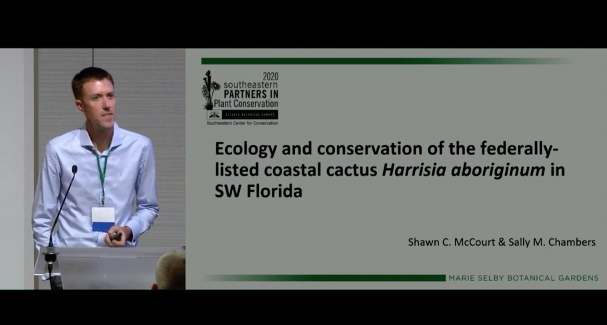
Shawn C. McCourt, Sally M. Chambers, and Bruce K. Holst, Marie Selby Botanical Gardens The genus Harrisia (Cactaceae) comprises 20 narrowly endemic species of night-blooming cacti with two widely separated geographic ranges, including South America south of Amazonia, as well as the West Indies and southern Florida. Commonly known as aboriginal prickly-apple, H. aboriginum is […]
Read More…
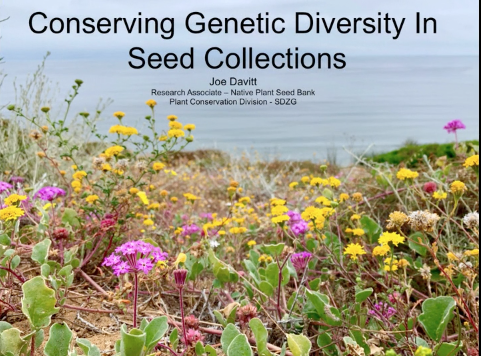
Joe Davitt, Institute for Conservation Research, San Diego Zoo Global Maintaining a plant species’ genetic diversity can contribute to adaptive potential, prevent inbreeding effects, and potentially preserve traits such as drought tolerance and disease resistance, all of which are critical in a changing climate. Seed collections are often the best method of conserving the genetic diversity of rare plant populations ex-situ, […]
Read More…






